Another long weekend holiday is happening in Malaysia!
This year, it’s double the excitement with two significant cultural celebrations, Thaipusam and Chap Goh Mei, falling on the same day, Sunday, February 5, followed by an additional public holiday on Monday, February 6.
If you are planning a short weekend getaway for a transformative and vibrant Thaipusam travel experience, we got you covered with insights on Malaysia’s most popular Thaipusam destinations.
Understanding Thaipusam and Its Hallmark Rituals
From India to Asia, the Caribbeans, and beyond, Thaipusam is a significant Hindu festival that binds the Tamil diaspora across the globe to its ancient spiritual and mythological roots.
Thaipusam derives its name from the words ‘Thai’, the name of a month in the Tamil calendar and the star ‘Pusam’. The festival celebrated in temples dedicated to Lord Murugan occurs on a full moon day when the star, Pusam, is at its highest point and shines the brightest. In the Gregorian calendar, this annual festival falls in January or February. Thaipusam is a public holiday in numerous states in Malaysia, such as Selangor, Perak, Penang and Johor, and celebrated on a grand scale with deep fervour and reverence.
The Significance of Thaipusam
According to Tamil mythology, Thaipusam observes the occasion when Goddess Parvati, the Goddess of Love, Motherhood, and Devotion and wife of Lord Shiva (one of the principal deities in Hinduism), gave her son, Lord Murugan a sacred spear (‘Vel’) to battle the evil demon, Surapadman. It follows that the significance of Thaipusam lies in the victory of good over evil. With the divine lance, Lord Murugan conquered the evil demon restoring peace and tranquillity in the three realms – heaven, earth, and hell. In Tamil literature and culture, Lord Murugan is revered as a symbol of fortitude, youth, compassion, generosity, wisdom, equality, and justice.
Hallmark Rituals of Thaipusam Malaysia
Chariot Procession
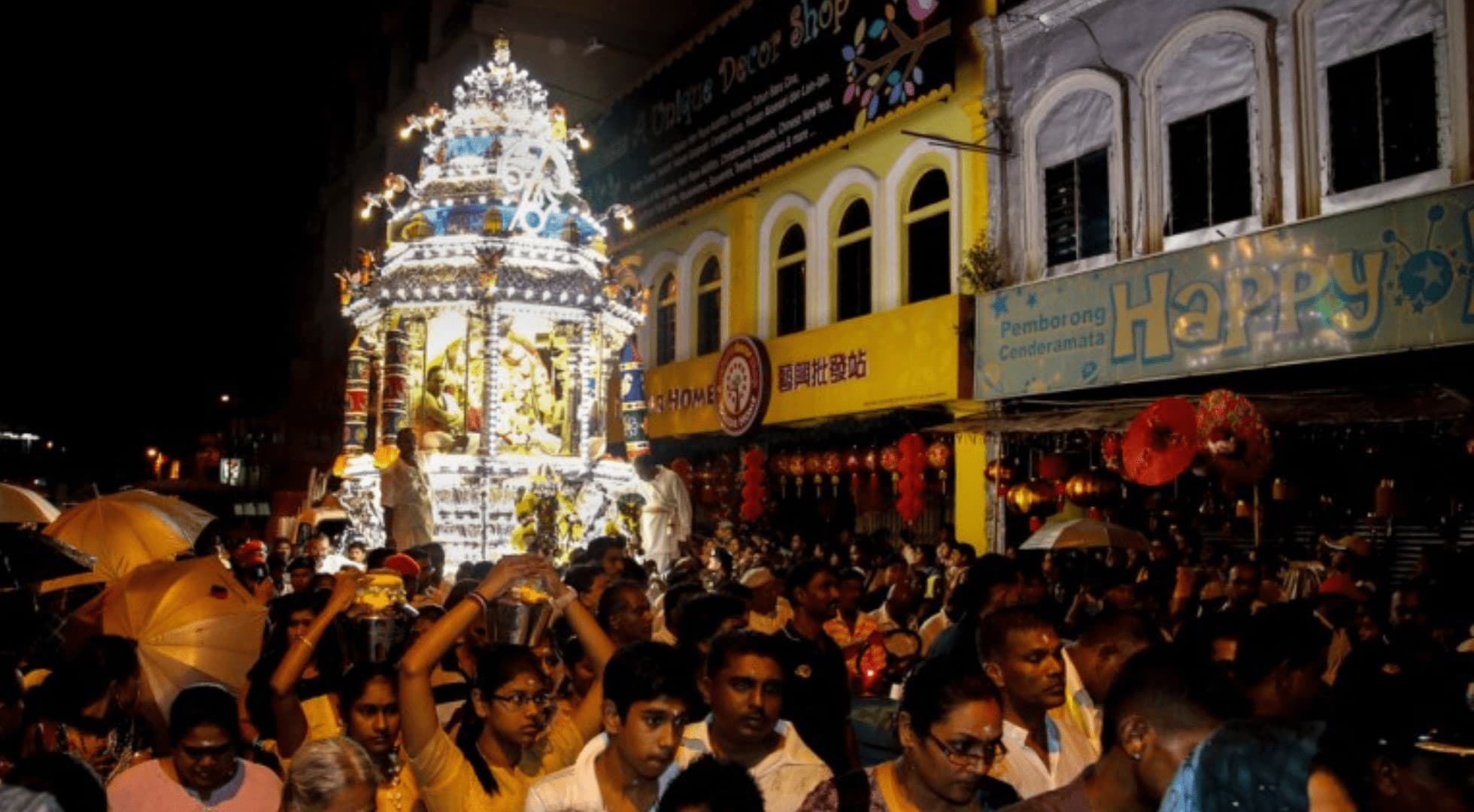
The starting point of Thaipusam celebrations in Malaysia is the silver chariot procession of Lord Murugan and his two consorts, Goddesses Deivanai and Valli. The silver chariot, a massive structure with intricate carvings and bright LED illuminations, is a marvel to witness at night as it begins its journey along Jalan Tun H.S Lee, famously known for its thriving street culture scene and tourist landmark, Petaling Street or the Chinatown of Kuala Lumpur.
On the eve of Thaipusam, devotees will gather at the Sri Maha Mariamman Temple in Jalan Tun H.S. Lee, Kuala Lumpur, to witness the ceremonial bath of Lord Murugan, followed by elaborate decorations in gold, bright flowers, and the most sacred religious adornment, the Golden Vel, before the holy statue is placed inside the silver chariot.
The chariot procession from the Sri Maha Mariamman Temple to the natural limestone hills of the Sri Subramaniar Temple Batu Caves in Selangor, the most famous Murugan temple outside of India, takes more than 10 hours. This year, the silver chariot procession begins in Kuala Lumpur on Friday, February 4, around 10 pm and reaches Batu Caves on Saturday, February 5, around 3 pm. The return journey of the chariot procession from Batu Caves to Sri Maha Mariamman Temple is expected to begin at 3.30 pm on Monday, February 6.
A central feature of the worship of Lord Murugan is the pilgrimage on foot, where devout worshippers walk along the procession route barefoot and visit Murugan temples along the way carrying silver Pal Kudam (milk pot) and Kavadis as forms of penance.
Kavadi
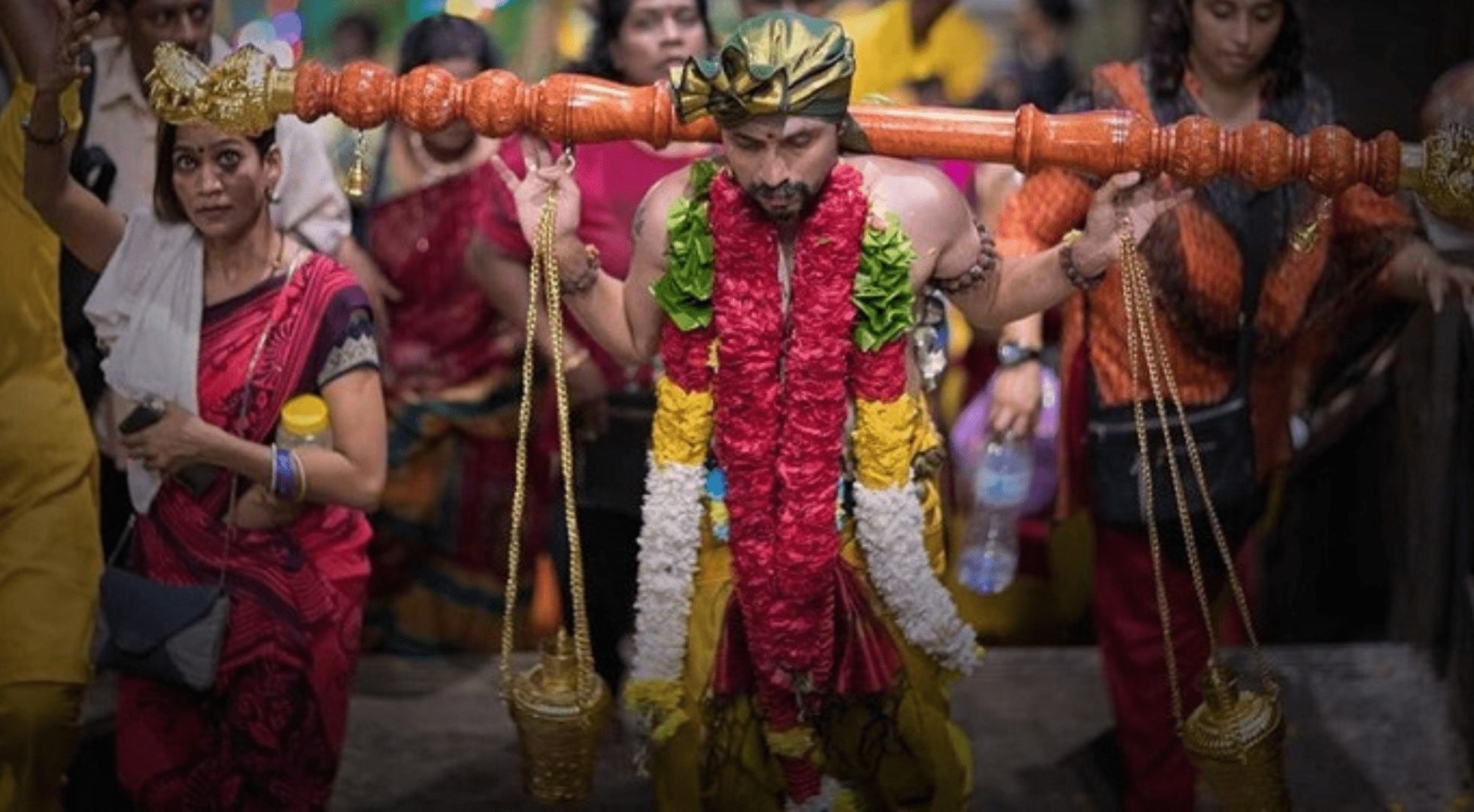


The spiritual significance of bearing a Kavadi as a form of penance in Murugan worship originates from the Tamil mythology of Sage Agastya and an Asuran (demon) named Idumban. Sage Agastya instructed Idumban to carry two hills, Sivagiri and Saktigiri, to his abode in the South. Idumban had the mountains on a shoulder pole and stopped to rest at a forest site now called Palani. When Idumban wanted to resume his journey, he couldn’t lift the hills as they were stuck to the ground. Upon ascending the mountain, Idumban came across a youth clad in a loin cloth with a spear, none other than Lord Murugan, who claimed ownership of the hills.
In the battle that ensued, Idumban was slain by Lord Murugan but later brought back to life. Idumban was appointed the gatekeeper, and Lord Murugan decreed that worshippers who carry the Kavadi (signifying the two hills) on their shoulders and visit the Palani temple for personal vows should be blessed.
Carrying a Kavadi is the purest form of humility and devotion for the lessening of one’s life burdens by Lord Murugan. Devotees of Lord Murugan fervently believe that the self-sacrificial act of bearing a Kavadi brings abundant blessings. Therefore, only those destined to carry a Kavadi can do so, as it is the most auspicious and rigorous offering to Lord Murugan. Essentially Kavadi bearers shoulder the altar of Lord Murugan.
The simplest form of Kavadi is a wooden stick with two pots or baskets slung over the shoulder. In Malaysia, the most common Kavadi (and no less mesmerising) include the Alangara Kavadi (adorned with images of Lord Murugan, peacock feathers, and other religious paraphernalia like the Rudraksha Mala) and the Pushpa Kavadi (decorated with colourful flowers).
Another unique offering seen in Thaipusam celebrations across Malaysia is the Karumbu Kavadi, a form of gratitude by parents for the birth of a child. Newborns are carried in a crib made of cloth tied to a sugar cane pole hoisted over both parents’ shoulders.
The rigorous preparation for devotees to complete their vows on Thaipusam begins 48 days before the sacred festival, which includes a vegetarian diet, complete abstinence from alcohol, cigarettes, celibacy, sleeping on the floor, and reading holy scriptures. In addition, men do not shave or cut their hair during this period.
Purification Bath and Hair Offertory
Devotees taking part in Thaipusam celebrations take a purification bath, shave their heads, and adorn traditional yellow attire on the pilgrimage by foot to Murugan temples across Malaysia to fulfill their vows. Today, even women shave their heads as kanikai (offering) for the birth of a child or for healing diseases or terminal illnesses.
Body Piercings
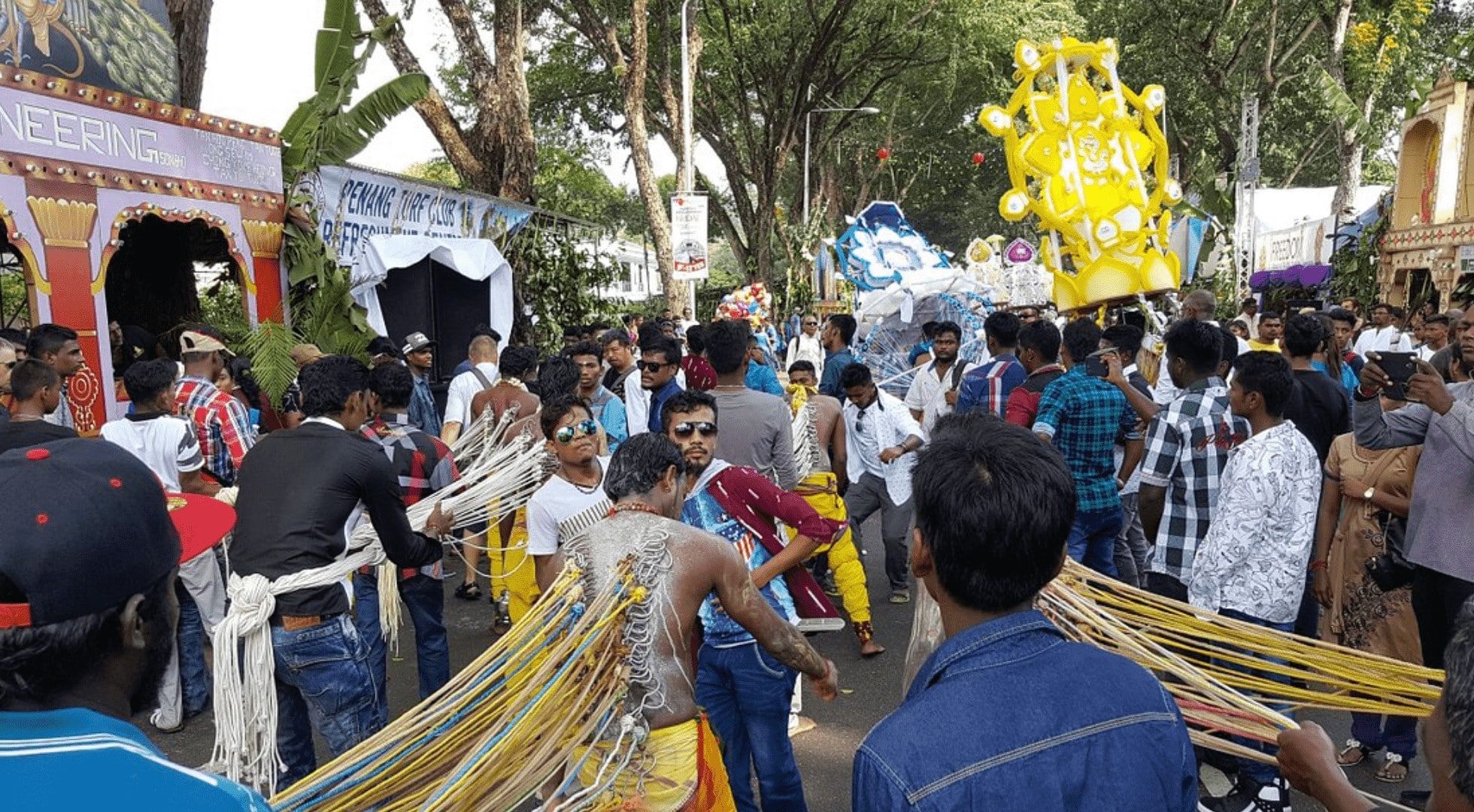


The intriguing body piercings on devotees remain the most striking feature of Thaipusam in Malaysia. From metal lances, both large and small symbolising the sacred Vel of Lord Murugan to little silver pots filled with milk or limes hanging from sharp metal hooks on the back of Kavadi-bearers to the massive spiked Kavadis weighing more than 40 kg, this form of penance is one of the most challenging acts of mind over matter. A common form of Thaipusam body piercing in Malaysia is the Vel skewers pierced through the cheeks to ward off negativity and evil forces.
On Thaipusam day, Kavadi bearers enter into a trance-like state known as Arul Vaku with the aid of sacred chants and spiritual music, mysteriously resulting in no blood nor extreme pain during the piercing ritual. Vibhuti (holy ash) scattered on Kavadi bearers aid in healing the wounds without leaving a scar.
Yellow Traditional Attire
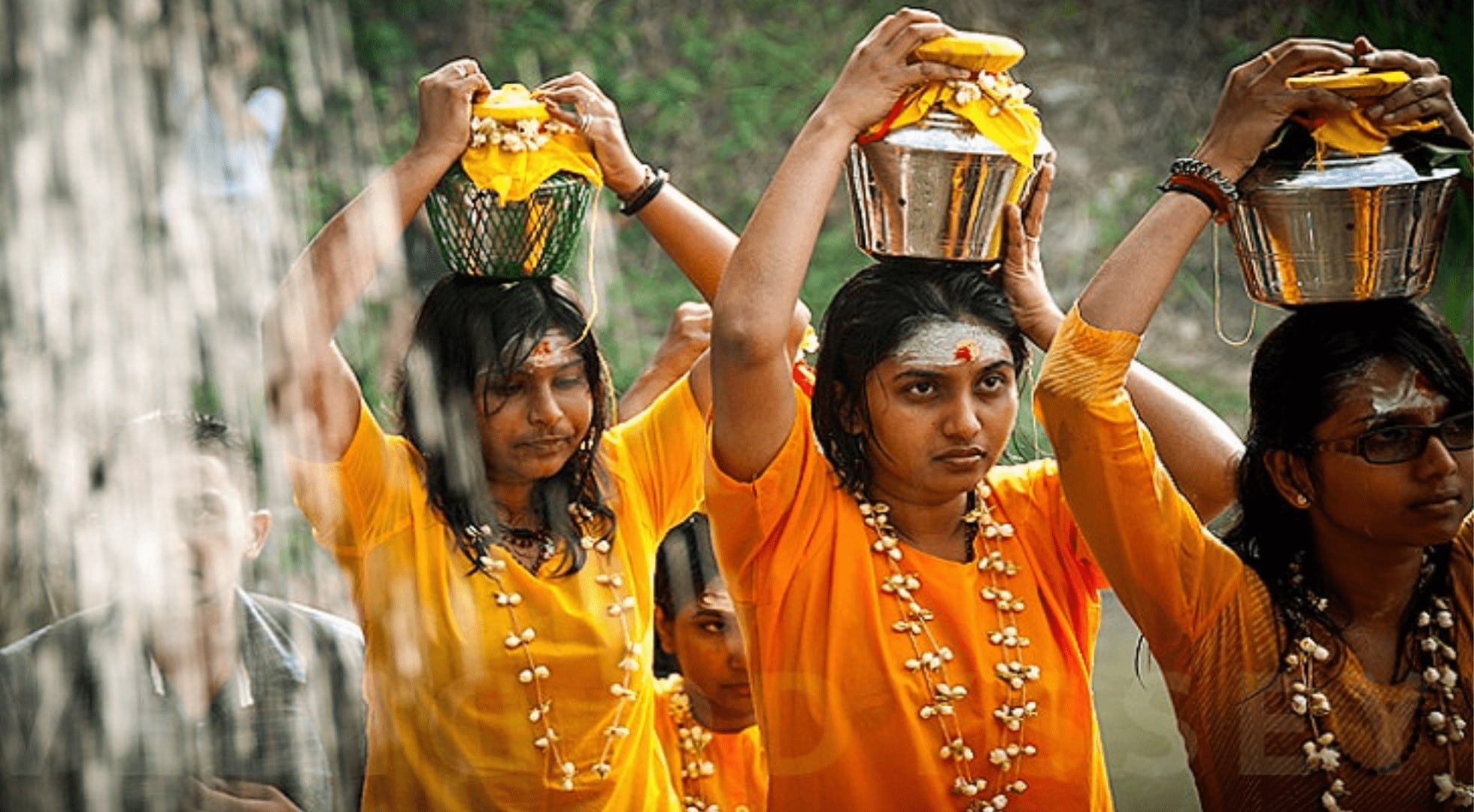


Devotees fulfilling their vows are dressed in yellow and traditional Indian attire – veshti for men and saree or churidar for women. Yellow, Lord Murugan’s favourite colour, represents new beginnings and peace. Visitors travelling to witness Thaipusam celebrations across Malaysia are encouraged to blend in by wearing yellow and dressing modestly out of respect for the sacred festival.
Transcendental INDIAN Beats and Sacred Chants
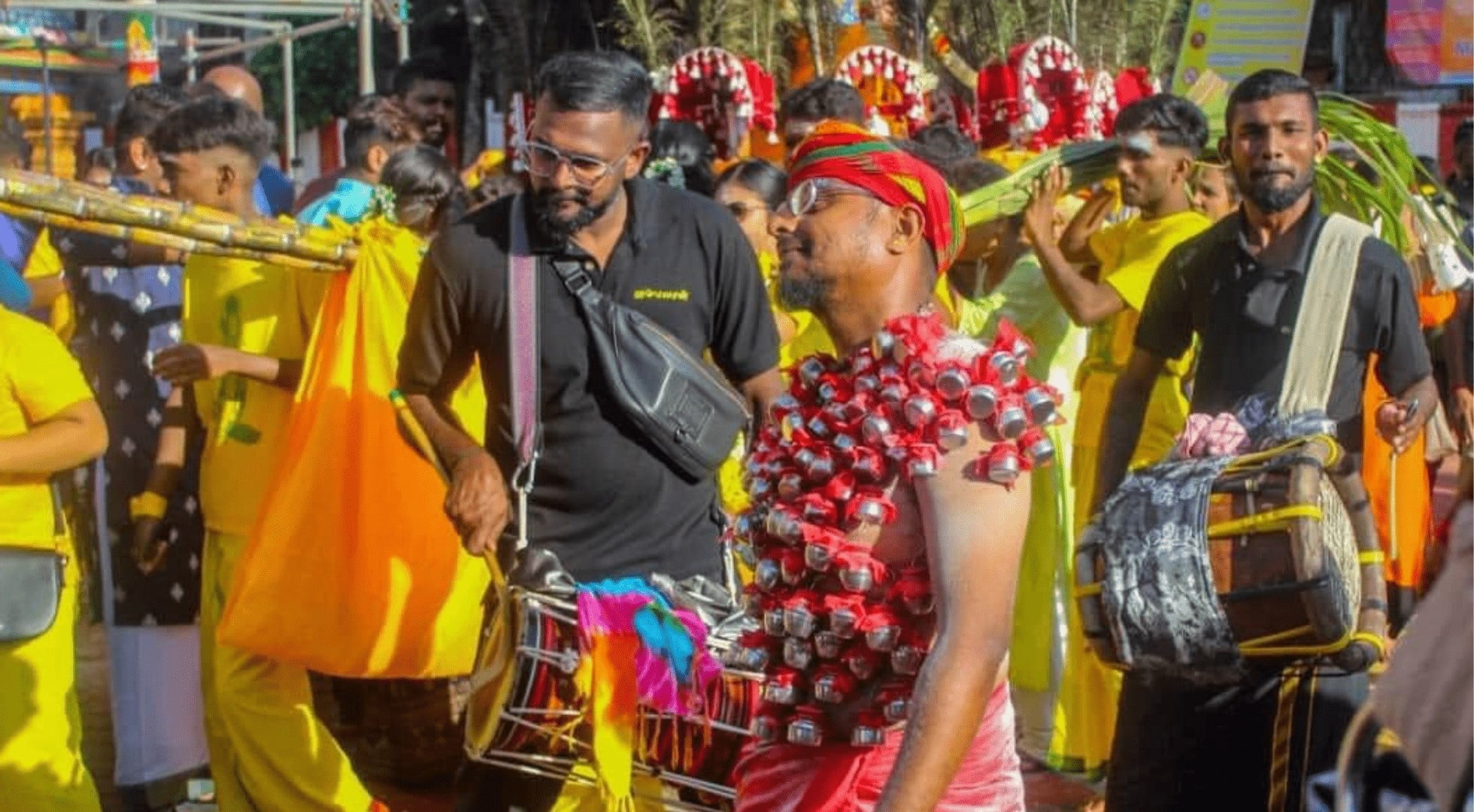


The intense beat of the Urumi Melam, an hourglass-shaped drum struck with sticks, produces unique sounds like the deep ‘moaning’ sound by striking the right head while simultaneously rubbing the left head with the edge of a long curved stick that induces spiritual energy in Kavadi bearers as they perform the Kavadi Attam (a dance form) swaying and jiving to the ethereal rhythm of the Urumi Melam and other Indian acoustic instruments like the Nadaswaram (Indian trumpet) and Thavil (Indian drum).
Travellers to Thaipusam destinations in Malaysia will be entertained by devotional songs like the Kavadi Sindhu celebrating Lord Murugan blasting through stereos along the temple grounds as the sacred chants of Vel Vel Vetri Vel Muruga or Kandanukku Arogara by throngs of devotees reverberate in the incense-filled air.
Top Thaipusam Travel Destinations In Malaysia
1. Batu Caves, Selangor
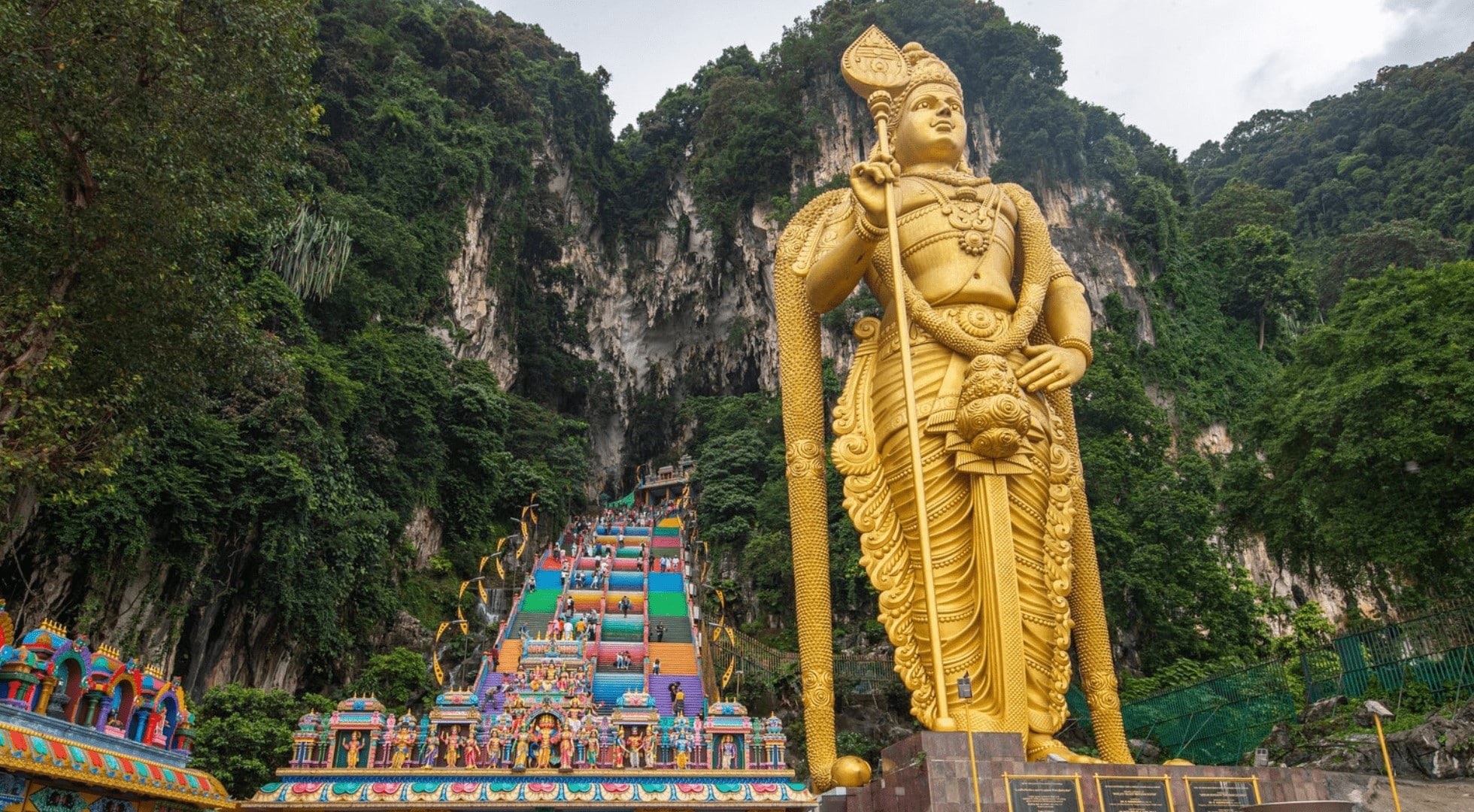


As widely known, the silver chariot procession departs from the Sri Maha Mariamman Temple in the heart of Kuala Lumpur. Then, finally, the Ratham (sacred chariot) arrives at its final destination in Batu Caves, located on the outskirts of Kuala Lumpur city.
Home to the largest Murugan statue in the world at 42.7 metres high, the magnificent structure standing sentinel at the foot of the hill is a marvel like none other. The instantly recognisable 272 colourful steps become the focal point of Thaipusam as thousands of devotees carrying Paal Kudam and vibrant Kavadi ascend the pathway to the main temple to complete their vows.
In the main Temple Cave, you can witness priests performing the Paal Abhishekam (pouring of milk) for Lord Murugan carried in silver pots by devotees, a ritual believed to remove negative energy.
Other Thaipusam attractions include the hundreds of stalls selling vegetarian meals, Indian sweets, and accessories at the temple compound and trading area. But, even the permanent residents of Batu Caves, the cheeky monkeys have gained popularity among travellers to this world-renowned Hindu pilgrimage site.
2. Ipoh, Perak
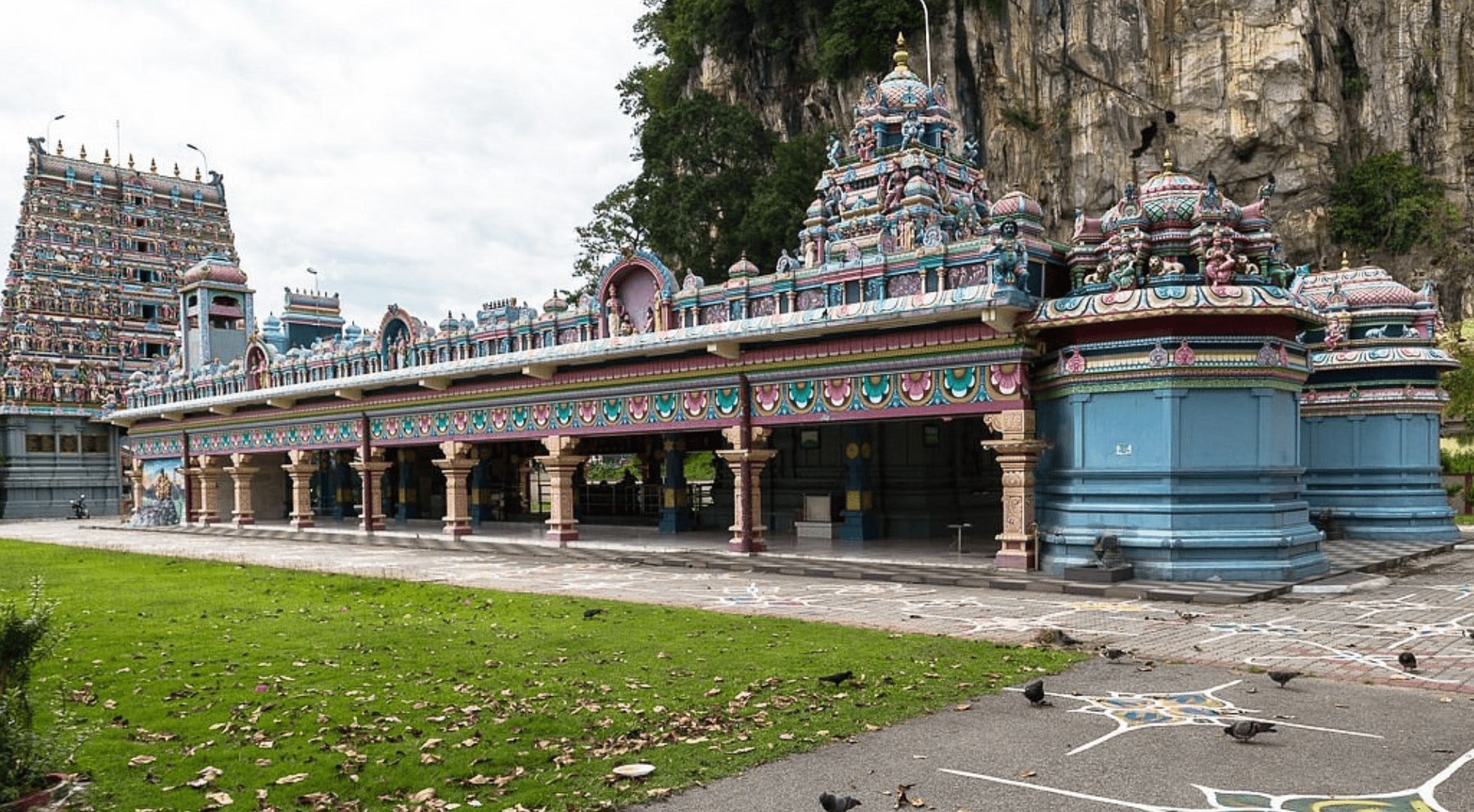


The height of Thaipusam celebrations in Ipoh is at the Kallumalai Arulmigu Subramaniar Temple, located at the foot of Gunung Cheroh. Unlike the temple inside Batu Caves, this temple in Ipoh was built away from the cave in the 1930s due to a tragic incident.
A striking feature of the Ipoh Kallumalai Temple is the seven-tiered and 21 metres high gopuram (entrance tower) with over 500 colourful figurines. There is also a peacock enclosure at the rear portion of the temple, a symbol of Lord Murugan’s mount.
On the last day of Thaipusam, the chariot procession with Lord Murugan and Goddess Parvati returns to the Sri Maha Mariamman Temple in Buntong, with prayers conducted by the high priest along the way. Devotees also give offerings and break coconuts as a sign of gratitude for prayers answered.
3. Georgetown, Penang
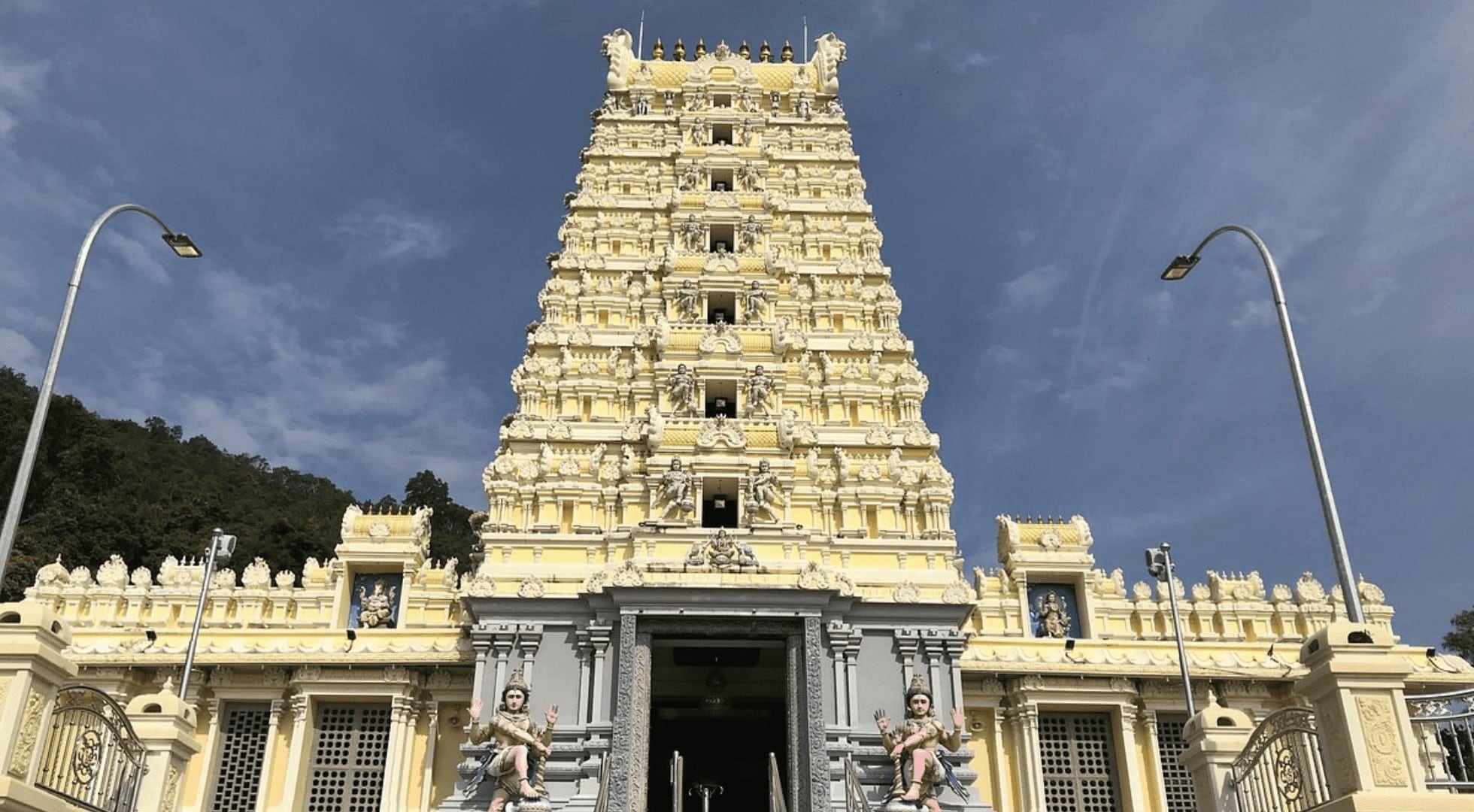


Since 2017, the Thaipusam chariot procession in Penang has involved two chariots, a silver chariot carrying Lord Murugan and a golden chariot that bears the Vel. In 2023, the golden chariot departs from Sri Maha Mariamman Temple in Lebuh Queen, the oldest Hindu temple in Penang, before reaching its final destination at the Arulmigu Balathandayuthapani Temple (Waterfall Hill Temple). Meanwhile, the silver chariot pulled by bulls carrying Lord Murugan departs from Kovil Veedu Temple at Penang Street, passes the same route, and concludes at the Waterfall Hill Temple.
Along the 8 km route, fellow Penangites including the Chinese community, break coconuts and make offerings of fruits to seek the blessings of Lord Murugan amidst a sea of Tamil devotees carrying milk pots and Kavadis.
The Waterfall Hill Temple’s striking features include its seven-storey gopuram, over 500 steps, and a panoramic hilltop view of Georgetown. Unfortunately, due to the massive crowds on Thaipusam day, devotees descending from the hilltop temple after fulfilling their vows proceed on a separate flight of stairs.
Thaipusam Malaysia Travel Activities You Need To Do
Kuala Lumpur
1. Take a KTM train ride from KL Sentral to Batu Caves



If you are travelling from Kuala Lumpur, the fastest and cheapest way to get to Batu Caves is a KTM train ride. The train services from the Klang Valley to Batu Caves are in operation 24 hours until the last day of Thaipusam on Monday, February 6.
Sit back, relax, and enjoy the train ride amidst beautiful landscapes and greenery as you journey away from the city centre for a front-row seat to experience the ultimate Thaipusam celebration in Malaysia at Batu Caves.
2. Snap Instagram-worthy images of vibrant Kavadi bearers and the majestic golden statue of Lord Murugan
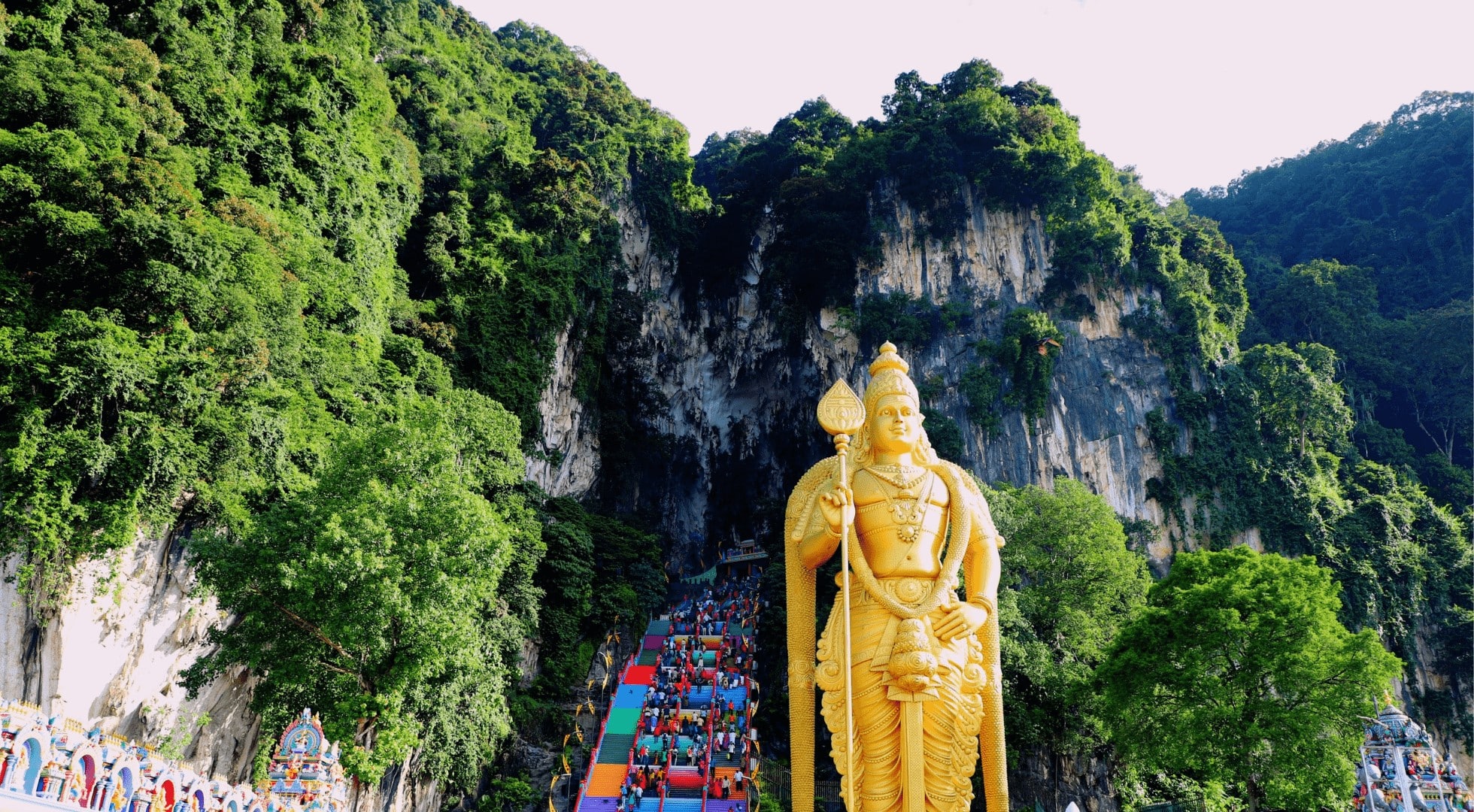


As scaling the brightly coloured 272 steps to the main Temple Cave may be challenging for some travellers amidst large crowds during Thaipusam, don’t miss a chance to snap images of vibrant Kavadi bearers and the iconic golden statue of Lord Murugan that embodies the height of spirituality at Batu Caves.
3. Savour Indian vegetarian meals and delicacies
With over 200 stalls at the Batu Caves Thaipusam festival this year, be sure to get a taste of all things Indian, from vegetarian meals to Indian sweets and beverages. Nothing beats a hot cup of chai for an extra boost of energy!
4. Follow the return silver chariot procession to Kuala Lumpur
This year, Thaipusam is a four-day celebration that ends on Monday, February 6, a public holiday. Make the best of your day off and walk along the chariot procession route and witness prayers performed by priests, the breaking of coconuts, and various offerings by devotees as the silver chariot returns home to the Sri Maha Mariamman Temple in Jalan Tun H.S Lee, Kuala Lumpur.
Ipoh
1. Visit Ipoh Kallumalai Temple
Spend an afternoon at Kallumalai Arulmigu Subramaniar Temple, located near the limestone caves of Gunung Cheroh. The 21-metre-high gopuram, with hundreds of colourful and intricate figurines central to Hinduism, is reminiscent of ancient Hindu temples in India. Apart from witnessing the revelries of Thaipusam, don’t forget to catch the captivating sight of peacocks walking about in the peacock enclosure behind the temple area.
2. Go on a food trip to IPOH
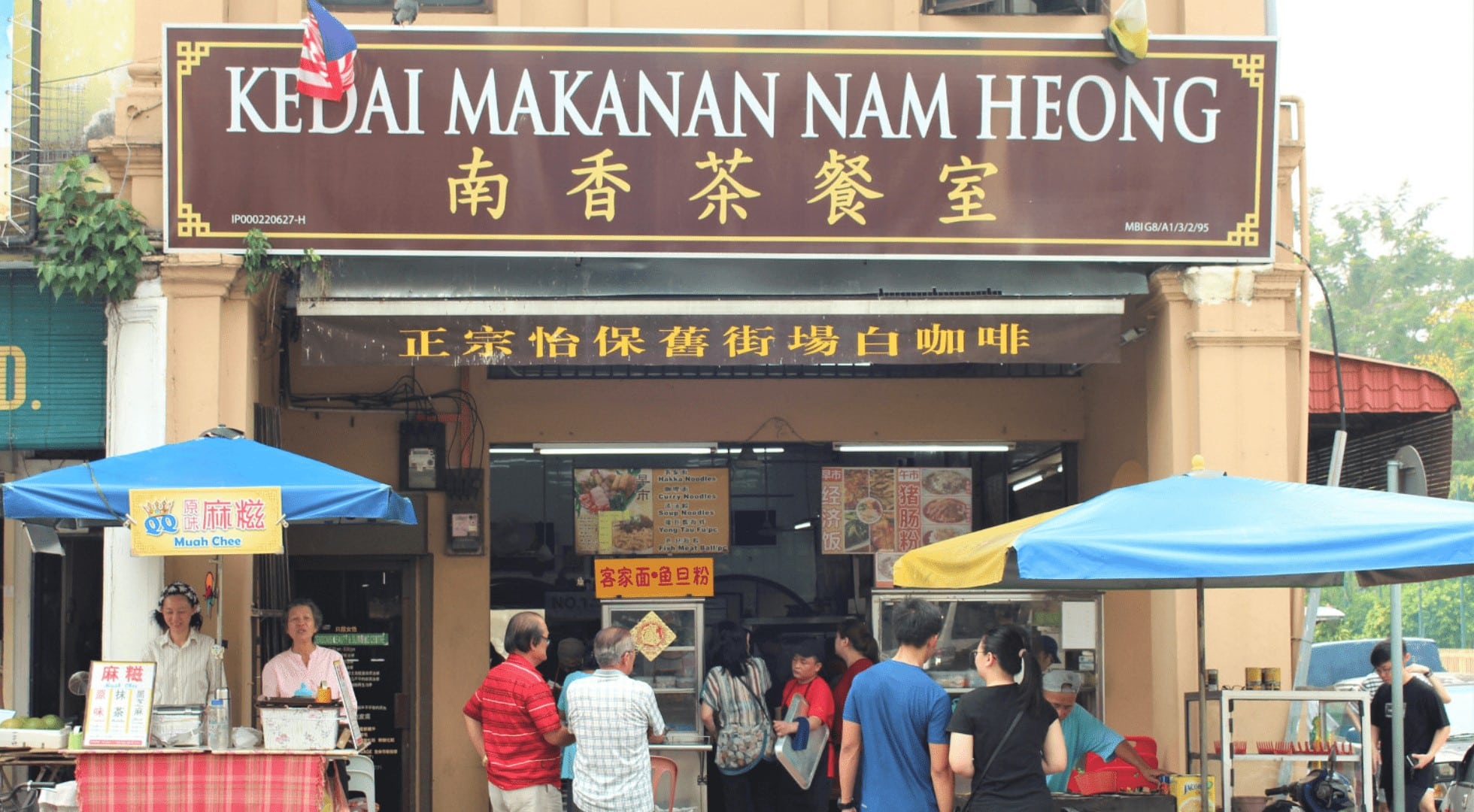


Topping CNN Travel Asia’s 18 Most Underrated Places, Ipoh boasts a perfect itinerary for food and drinks guaranteed to tantalise the tastebuds of foodies worldwide. Among Ipoh specialities not to be missed are Nam Heong White Coffee, Canning Garden Chee Cheong Fun, and Nasi Ganja at Kedai Kopi Yong Suan.
Penang
1. Scale over 500 steps Leading to the Waterfall Hill Temple
If you can conquer the 272 steps of Batu Caves, get ready for an adrenaline rush as you scale more than 500 steps to reach the Waterfall Hill Temple of Penang, one of the most prominent Lord Murugan temples outside India. Once you reach the top, enjoy the cool breeze and breathtaking view of Georgetown.
2. Explore Penang’s famous street art scene
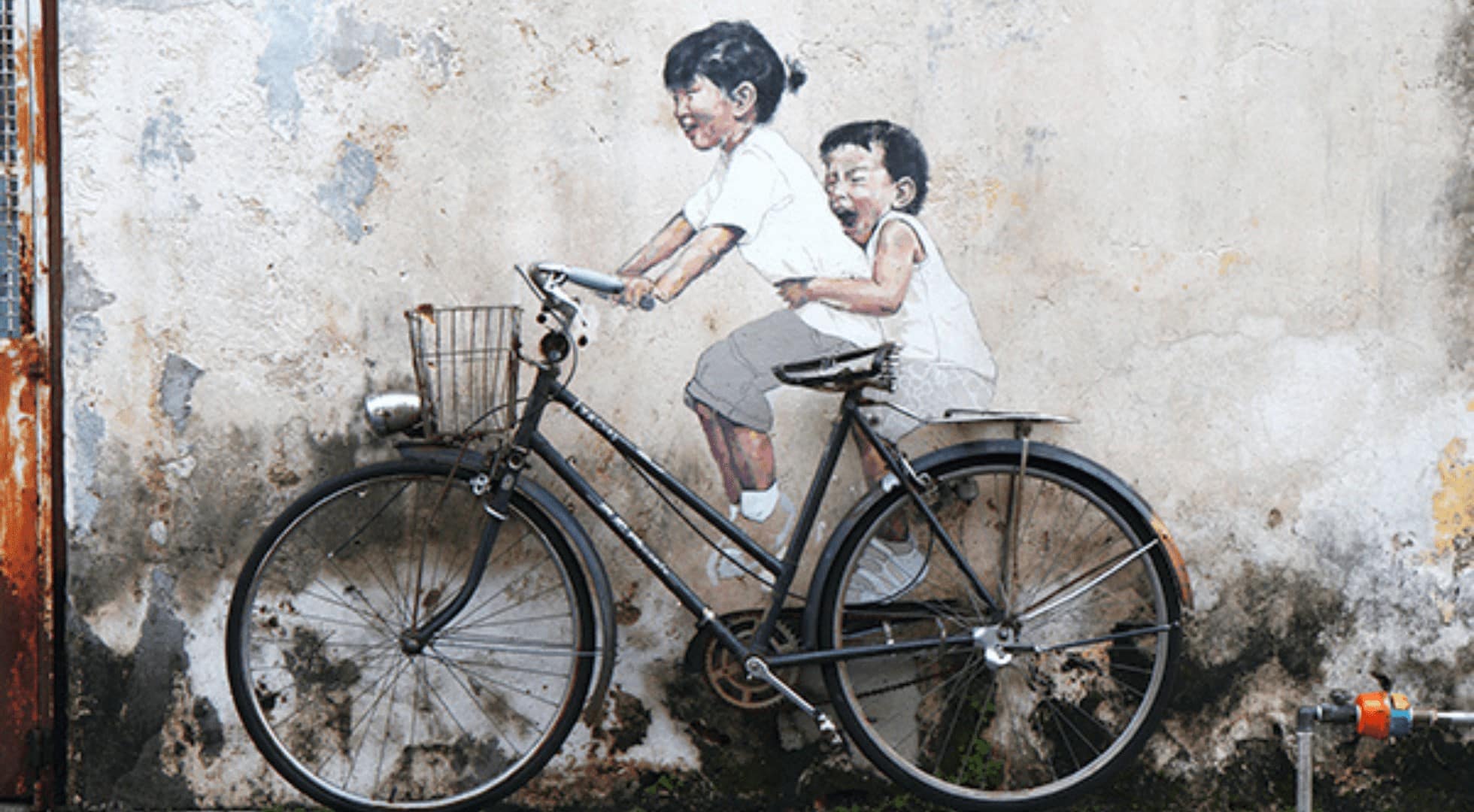


Georgetown is well-known for its postcard-perfect street art murals. Explore the streets of Georgetown by foot for famous street art murals, such as the two kids on a bicycle at Armenian Street and a brother and sister on a swing mural at Gat Lebuh Chulia, painted by Louis Gan, a local deaf and mute artist.
Eager for an exciting Thaipusam Malaysia travel adventure?
REACH OUT TO US AT +603 2303 9100 OR
[email protected]
You may also be interested in:
